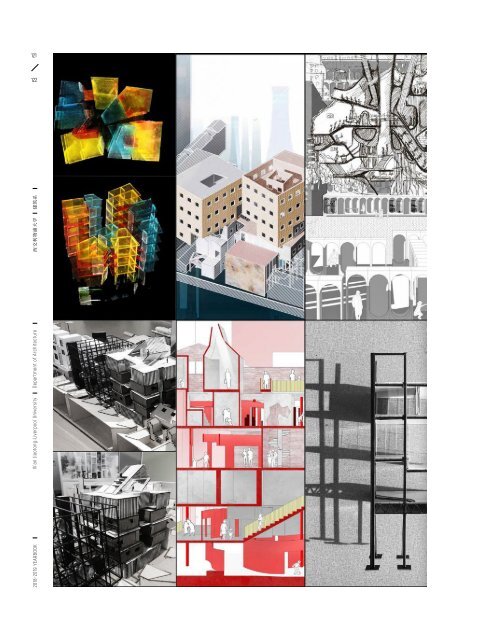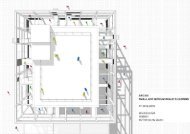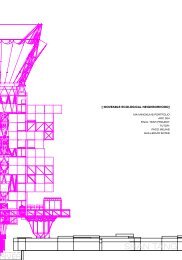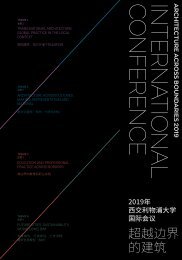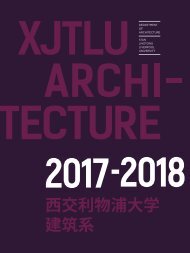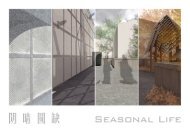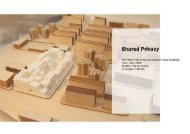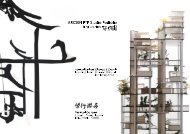YEARBOOK 2018 - 2019 | XJTLU DEPARTMENT OF ARCHITECTURE
The sixth edition of the yearbook of the Department of Architecture at Xi'an Jiaotong-Liverpool University presents student works created during the academic year 2018 - 2019. The yearbook exemplifies the new model for Chinese architectural education for which the department was commended by the Royal Institute of British Architects (RIBA). It is also a showcase of the creative culture that has guided our students towards successful international careers as responsible and creative architectural designers. The Department of Architecture at XJTLU offers RIBA Part 1, 2 and 3.
The sixth edition of the yearbook of the Department of Architecture at Xi'an Jiaotong-Liverpool University presents student works created during the academic year 2018 - 2019. The yearbook exemplifies the new model for Chinese architectural education for which the department was commended by the Royal Institute of British Architects (RIBA). It is also a showcase of the creative culture that has guided our students towards successful international careers as responsible and creative architectural designers. The Department of Architecture at XJTLU offers RIBA Part 1, 2 and 3.
Create successful ePaper yourself
Turn your PDF publications into a flip-book with our unique Google optimized e-Paper software.
121<br />
122<br />
ARC305<br />
Design Studio<br />
Small and Medium Scale Buildings<br />
<strong>2018</strong>-<strong>2019</strong> <strong>YEARBOOK</strong> Xi’an Jiaotong-Liverpool University Department of Architecture 西 交 利 物 浦 大 学 建 筑 系<br />
Level 3<br />
( Year 4 | Semester 1 )<br />
Module Credits<br />
10<br />
Module Leader<br />
Glen Wash Ivanovic<br />
Teaching Team<br />
Glen Wash Ivanovic<br />
Sofía Quiroga<br />
Tordis Berstrand<br />
José Á. Hidalgo<br />
Richard Hay<br />
Paco Mejias Villatoro<br />
Technology Tutors<br />
Zayad Motlib<br />
Moon Kim<br />
Number of Students<br />
74<br />
Mending the Block:<br />
Exploring New Units for Shanghai<br />
Blocks are one of the most essential elements of any built environment.<br />
Surrounded by streets, their morphology, sizes and characteristics play<br />
a fundamental role in defining the relationship between ratios of inside<br />
and outside, open and closed space, public and private, new and old, close<br />
and far.<br />
In China, however, blocks seem to be subordinated to a more unique and<br />
somehow rigorous form of urban organization: the gated communities.<br />
Initially understood and planned as the communist urban equivalent<br />
of the Chinese traditional courtyard house, gated communities are<br />
groups of blocks designed and implemented in order to create a sense<br />
of larger, neighborhood community with their own yards, security and<br />
sharing spaces. Yet, their scale, layout and top-down implementation<br />
seems to have created the opposite, and their sense of neighborhood and<br />
community are far lower than those found in more traditional Chinese<br />
ways of planning like the ones seen in Beijing's Hutong or Suzhou’s old<br />
town.<br />
In Shanghai, we see large portions of city blocks being demolished and<br />
replace by new gated communities. Can we find a different way in which<br />
to think some of Shanghai’s blocks? Can we propose buildings that, in<br />
their inner logic and interaction with buildings around them generate<br />
new alternatives for urban interlacing? Through six different briefs, this<br />
studio explores new possible dynamics between the block and buildings<br />
in Shanghai’s Jing'an District.<br />
Level 03 – Year 4<br />
B Eng Architecture Programme


